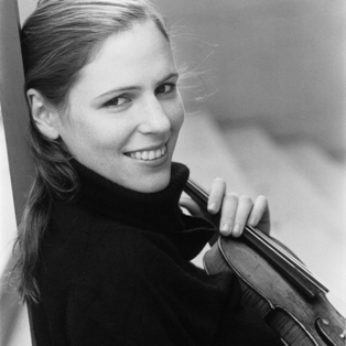Composer: George Enescu (b. 1881 - d. 1955)
Performance date: 29/06/2014
Venue: Bantry Library
Composition Year: 1926
Duration: 00:25:08
Recording Engineer: Richard McCullough, RTE
Instrumentation Category:Duo
Artists:
Nurit Stark -
[violin]
Cédric Pescia -
[piano]

The
most extraordinary human being, the greatest musician and the most formative
influence I have ever encountered. Yehudi Menuhin
on George Enescu
George Enescu came from the Moldavian
region on the border of
He divided his life between an international performance career based in
in Romanian music. Like so many performer-composers he was also equally
conflicted between the demands of composing, performing, promoting and teaching.
His busy life as teacher, virtuoso and organiser allowed him little time for
his creative work. As a violinist his repertoire ranged from Bach to his own
works, most of them played from memory. It is also said that he could conduct the complete works of Wagner without a
score.
In this work, one of the great sonatas of
the twentieth century, he evokes the styles of Romanian folk music, something
akin to the way Bartók used his immersion in Hungarian folk music to colour his
compositions. Enescu never resorted to simply quoting or ornamenting
traditional music, he recreates and transfigures it into a new and mysterious
world of its own. This prodigiously
subtle, infinitely rich, sorrowfully sensitive sonata is full of memories of
childhood and homeland, magnified by time and nostalgia.
He presented Romanian music as a fund of
modern styles: rhapsodic parlando rubato,
rich ornamentation, clashing intervals of a second, quarter-tones, unusual
playing techniques and a range of expression from the expectantly smouldering
to the extravagantly impassioned. This enables the listener to gain spontaneous
emotional access to the remarkable variety of the music. The violin makes much
use of harmonics and portamento, while the piano is at times made to sound like
a cimbalom, especially in the mysterious middle movement. Melodic augmented
seconds abound, reminding one both of
Turks and of her very large gypsy population.
The wonderful meditative dialogue that
opens the first movement conjures a world a long way from the classical violin
sonata. It whispers and sings and even dances, it seems like a totally free
improvisation but we grow to realise that this extreme freedom is rigorously
managed. In his determination to catch the spirit of Romanian music, Enescu
developed what was virtually a new language of violin writing with
extraordinarily detailed instructions and even the ornamentation elaborately
notated. When combined with the frequent fluctuations of rhythm, tempo and
mood, the result is a score brimming with expressive markings.
The great pianist Cortot, who discussed and
played the work with Enescu, described the slow movement as an evocation in sound of the mysterious
feeling of summer nights in
below, the silent endless deserted plain; above, constellations leading off
into infinity. The movement opens with the piano repeating the same notes
and the violin playing distant harmonies. This magical summer night gradually
disintegrates and a frenzied dance takes over, eventually bursting out in
ecstatic climaxes, before sinking back into the murmuring, magical night. The finale begins almost normally with a regular folk dance but this too
disintegrates into apparent improvisation, wild outcries, frenzied hammerings
ending in a tearing explosion of sound.
Copyright © 2025 West Cork Music. All rights reserved.
Designed and developed by Matrix Internet